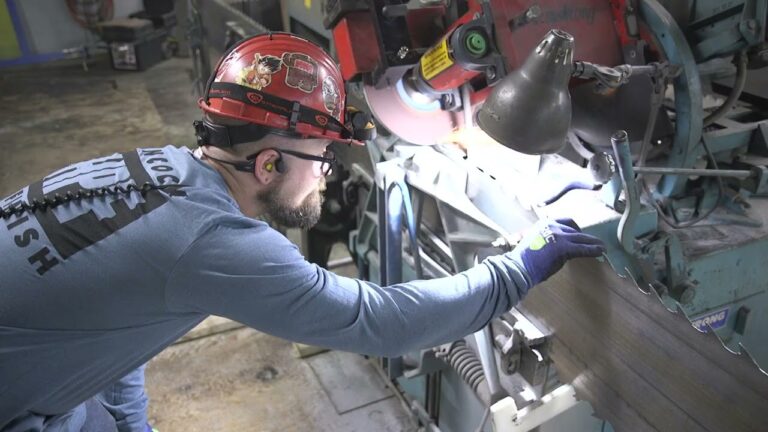High-Paying Athletic Trainer Job: Description and Salary

Athletic Trainer Job Description Template
An Athletic Trainer Job Description An athletic trainer is a healthcare professional who specializes in preventing, diagnosing, and treating injuries related to physical activity and sports. They work closely with athletes of all ages and skill levels to ensure their well-being and help them perform at their best. One of the key responsibilities of an athletic trainer is injury prevention. They assess the physical condition of athletes and develop customized exercise programs to improve their strength and flexibility, reducing the risk of injuries. They also educate athletes on proper warm-up and cool-down techniques and provide guidance on equipment use and safety precautions. In the event of an injury, athletic trainers are trained to provide immediate care. They evaluate the extent of the injury, administer first aid, and determine if further medical attention is required. They may also recommend and assist with rehabilitation exercises to help athletes recover and regain their physical abilities. Collaboration is another important aspect of an athletic trainer’s role. They work closely with coaches, physicians, and other healthcare professionals to ensure comprehensive care for athletes. They communicate with coaches about an athlete’s condition, progress, and restrictions, and collaborate with physicians to develop treatment plans and monitor recovery. The work of an athletic trainer requires strong interpersonal and communication skills, as they often work directly with athletes, coaches, and medical professionals. They must also stay up-to-date on the latest research and advancements in sports medicine to provide the best possible care. In summary, athletic trainers play a crucial role in keeping athletes healthy and safe. Their expertise in injury prevention, immediate care, and collaboration with other professionals contributes to the overall success and well-being of athletes.Athletic Trainer Responsibilities
Athletic Trainer Requirements
How Much Does A Athletic Trainer Make?
Athletic Trainer Salary
| Experience Level | Salary Range |
|---|---|
| Entry Level | $35,000 – $45,000 |
| Mid-Career | $45,000 – $60,000 |
| Experienced | $60,000 – $75,000 |
| Senior Level | $75,000 – $100,000 |
An athletic trainer’s salary varies depending on their experience level. Entry-level athletic trainers can expect to earn between $35,000 and $45,000 per year. As they gain more experience and advance in their careers, mid-career athletic trainers can earn between $45,000 and $60,000 annually. Experienced athletic trainers, with several years of experience under their belt, can make between $60,000 and $75,000 per year. At the senior level, athletic trainers with extensive experience and expertise can earn between $75,000 and $100,000 annually. It’s important to note that these salary ranges can also be influenced by factors such as location, employer, and industry.
Athletic Trainer Salaries by Country
Top Paying Countries for Athletic Trainer
| Country | Average Salary (USD) |
|---|---|
| United States | 55,000 |
| Switzerland | 49,000 |
| Australia | 48,000 |
| Netherlands | 47,000 |
| United Kingdom | 45,000 |
An athletic trainer’s salary can vary greatly depending on the country they work in. The table above showcases some of the top paying countries for athletic trainers. The United States leads the list with an average salary of $55,000 per year. Switzerland and Australia closely follow with average salaries of $49,000 and $48,000 respectively. The Netherlands and the United Kingdom complete the top five with average salaries of $47,000 and $45,000. It is important to note that these figures are averages and individual salaries may vary based on factors such as experience, qualifications, and location within each country.
A video on the topic Athletic Trainer
Video Source : Play FootballInterview Questions for Athletic Trainer
1. What qualifications do you need to become an Athletic Trainer?
To become an Athletic Trainer, you need to earn a bachelor’s degree in Athletic Training from an accredited program. Additionally, you must pass the Board of Certification (BOC) exam to become certified and meet any state licensing requirements.
2. Can you explain the role of an Athletic Trainer?
An Athletic Trainer is responsible for preventing, evaluating, and treating injuries in athletes. They work closely with coaches, physicians, and other healthcare professionals to provide immediate care, rehabilitation, and injury prevention strategies for athletes.
3. How do you handle emergency situations on the field?
In emergency situations, an Athletic Trainer must quickly assess the situation and provide immediate care. This may include administering first aid, immobilizing injured athletes, and coordinating with emergency medical services. Training in CPR and emergency protocols is essential for an Athletic Trainer.
4. What methods do you use to prevent sports injuries?
To prevent sports injuries, an Athletic Trainer may implement various strategies, such as educating athletes on proper warm-up and stretching techniques, implementing strength and conditioning programs, and ensuring athletes use appropriate protective equipment. Additionally, they may assess and address environmental factors that could contribute to injuries.
5. How do you create rehabilitation programs for injured athletes?
When creating rehabilitation programs, an Athletic Trainer assesses the athlete’s injury and works with physicians and physical therapists to develop an individualized plan. This plan may include exercises, stretches, and modalities aimed at restoring function, reducing pain, and preventing reinjury.
6. How do you communicate with coaches and other healthcare professionals?
Communication is crucial for an Athletic Trainer. They regularly communicate with coaches to discuss athlete progress, injury updates, and return-to-play plans. They also collaborate with physicians and physical therapists to ensure comprehensive care and share important information regarding an athlete’s condition.
7. How do you stay updated on the latest advancements in sports medicine?
As an Athletic Trainer, I stay updated on the latest advancements in sports medicine by attending conferences, workshops, and continuing education courses. I also actively engage in professional organizations and read research articles to stay informed about current practices and techniques.
8. How do you handle the emotional aspects of working with injured athletes?
Working with injured athletes can be challenging emotionally. It is important for an Athletic Trainer to provide emotional support and empathy to athletes during their recovery process. Additionally, they may collaborate with sports psychologists or counselors to help athletes cope with the psychological impact of their injuries.
9. How do you maintain confidentiality in your role as an Athletic Trainer?
Confidentiality is a critical aspect of an Athletic Trainer’s role. They must adhere to strict privacy laws and protect an athlete’s medical information. This includes discussing injuries and treatment only with authorized individuals, obtaining written consent for medical release, and securely storing medical records.
10. Can you describe a challenging situation you encountered as an Athletic Trainer and how you handled it?
During a game, I witnessed a player sustain a potentially serious head injury. I immediately assessed the situation, followed concussion protocols, and contacted emergency medical services. While waiting for help to arrive, I reassured the player and monitored their condition until they were safely transferred to the hospital. I then communicated the incident to the coaching staff, medical professionals, and the athlete’s parents to ensure proper follow-up care was provided.






